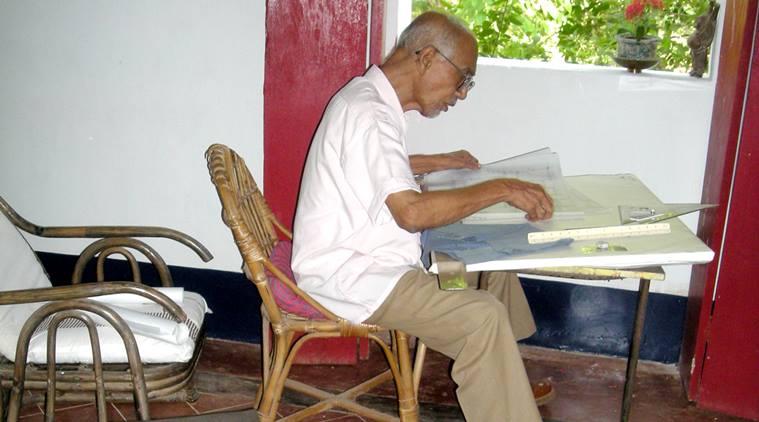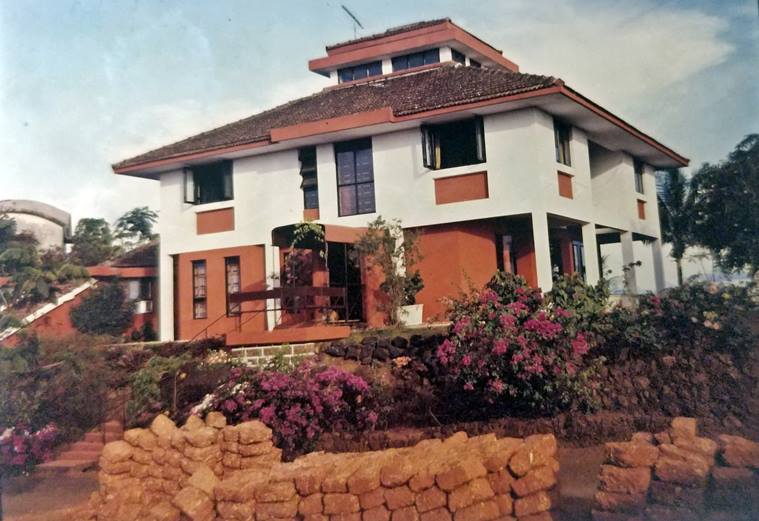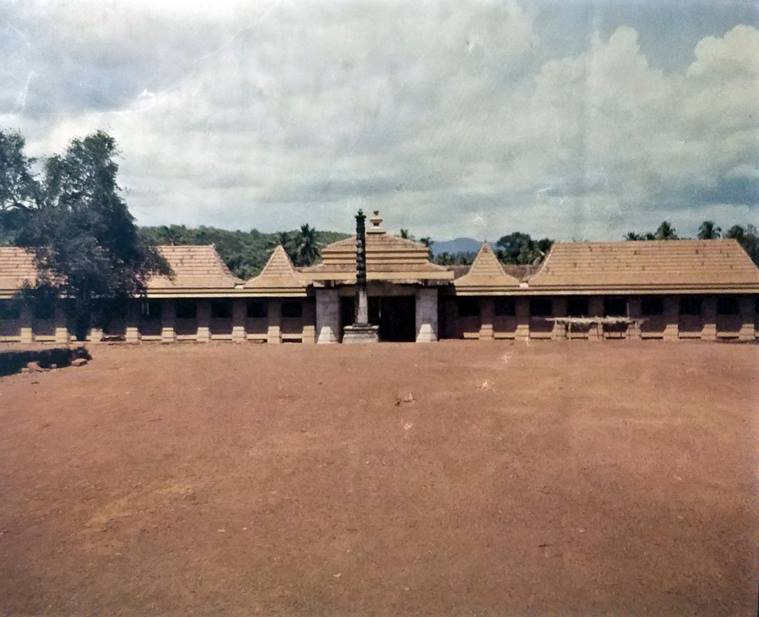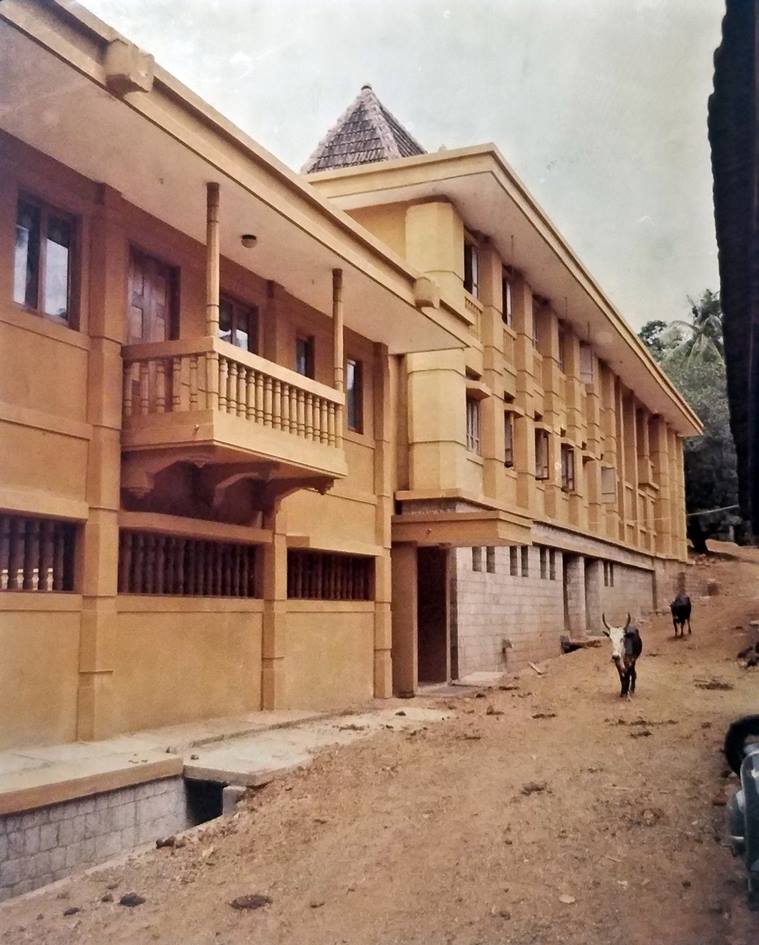- India
- International
Goa’s Guru, architect Sarto Almeida passes away
Sarto Almeida, who mentored architects across the country and gave buildings a modern regional edge, was instrumental in planning Goa’s cities.
 On May 26, Architect Sarto Almeida passed away at the age of 95. (Photo Courtesy: Sarto Almeida’s office)
On May 26, Architect Sarto Almeida passed away at the age of 95. (Photo Courtesy: Sarto Almeida’s office)
Architect Sarto Almeida arrived in Goa in the early 60s, when the newly liberated Union Territory was searching for a new identity. Fresh from his experience in Ahmedabad, which was at the time, every architect’s pilgrim city, Sarto brought with him a modernist vocabulary. Having worked at BV Doshi’s office, it was hard to miss the influences of Le Corbusier in Sarto’s early works. Over the years though, as he embedded himself into the life and pace of Goa, he realised concrete alone wasn’t the answer to the future. That’s when he shifted his gaze to the way houses and structures were traditionally built and developed his own way of blending the old and the new. For the next five decades, from 1967 onwards, when he set up an office in Margao, Sarto designed numerous public and private buildings, including institutions, places of worship and homes. He was actively involved in conservation and urban planning strategies for Goa and was instrumental in shaping futures for many young architects across the country. On May 26, he passed away at the age of 95.
Be it Goa Chamber of Commerce and Industries in Panaji, Carmelite Monastery Church at Aqueum, Partagali Math in Canacona, Laxmi Narayan Temple at Veling, Goa International Centre in Dona Paula, the auditorium at Fr Angel College Verna or the SOS Village, Sarto’s buildings were lessons in perfection and a search for regionalism. “When the Carmelite Monastery Church project came to him, the foundation had already been laid. He turned the church around. It’s beautiful to see how he brought light and ventilation inside, the simplicity of the stations of the cross that he designed, how the altar was made the focus, and the flooring beautifully executed with Shahbad stone and mosaic. To do something simple is always difficult. And you see that in all of Sarto’s buildings,” says structural engineer Olavo Carvalho, who has worked with him since the mid-80s. “He was never satisfied until he had perfected every floor and detail in a building,” he adds.
 Sarto designed simple houses for his clients in the most energy-efficient manner, without calling it a green building. (Photo Courtesy: Sarto Almeida’s office)
Sarto designed simple houses for his clients in the most energy-efficient manner, without calling it a green building. (Photo Courtesy: Sarto Almeida’s office)
Bengaluru-based architect Chitra Vishwanath remembers the time she was an intern at Sarto’s office in 1985. As a student of CEPT, Ahmedabad, she had heard stories of Sarto and it was an aspiration for many to work at his studio. “His office was in Elican Building that he had designed in Margao. From him I learnt the doing and redoing of details. I learnt the perfect articulation of sloping roofs, so much so that even today if I see it poorly executed in other projects, it annoys me. There was never any pretence of being an architect. He was always accessible and taught me humility and empathy,” she says. During the four months of her internship with Sarto, she worked on the Partagali Math project. “Just imagine, this was a place where they taught vedic texts, and the priests chose Sarto to design it for them. And he, on his part, learnt every aspect of the elements required for such a place. Sarto was so involved in it. It speaks of how versatile he was, be it a church or a temple, to be able to get into the skin of the people, understand their needs and fulfil that in a project,” says Vishwanath.
Speaking about the time that architects like Charles Correa, Doshi and Sarto practised in Goa, architect-urban designer Dean D’Cruz says that in those days, they were respected for their vision and given the freedom to execute their designs. “It was the time for new identity, not about a Goan style, so buildings didn’t have to conform to traditional cliches. Architects could explore new idioms and create a depth in their work, which didn’t have to conform to popular or political opinion,” he says.
 The Carmelite Monastery Church has a sculptural quality on the outside and within has natural light streaming on from the high windows set in the bell tower. (Photo Courtesy: Sarto Almeida’s office)
The Carmelite Monastery Church has a sculptural quality on the outside and within has natural light streaming on from the high windows set in the bell tower. (Photo Courtesy: Sarto Almeida’s office)
Doshi recalls his most reliable associate and friend, “who was closer than family”. “Sarto always loved working late into the night when he was in Ahmedabad. I would get his meticulous drawings in the morning, and I always knew there was something exciting in them. I would often wonder how he got there. There was a beautiful spatial quality about his drawings, where he would take you to that space through his sections. It would give me clues for my life when I thought of an architectural drawing as an experiential thing. He was very sensitive to structure, form and discovery of space,” says Doshi.

Sarto’s family was based in Tanzania, and his brother Anthony was a well-known architect there. Sarto chose to study at Sir JJ School of Architecture, Mumbai and had worked with Piloo Mody, before he headed to Ahmedabad. Along the way, he had made numerous friends, including the well-known cartoonist-painter Mario Miranda. This city also helped me meet his wife, Therese. When they moved to Goa finally, they founded the Manovikas School, one of the finest in the State.
Therese and Sarto’s home became the meeting place for family, friends and professionals; everyone knew they were always welcome. Senior urban planner Edgar Ribeiro says, “Much of Goa’s town planning strategies evolved through discussions at Sarto’s office and home in Margao. They later shifted home to Seraulim. There were many discussions on how the planning system should develop, what does Goa need, and how planning systems can formulate rules and regulations.” It was 1964, and with the first Goan government in place under Chief Minister Dayanand Bandodkar, the Government of India wanted to shift planning strategies for states from the colonial rule to an Indian system. Ribeiro was sent on deputation to Goa, his home state, where he would meet with his senior from JJ School – Sarto – and other architects and planners.
 The Partagali Math showed Sarto’s incredible understanding of local temple architecture. (Photo Courtesy: Sarto Almeida’s office)
The Partagali Math showed Sarto’s incredible understanding of local temple architecture. (Photo Courtesy: Sarto Almeida’s office)
 His ingenuity in presenting contemporary forms in verandahs and courtyards, which were inspired by the post-Chalukyan era. (Photo Courtesy: Sarto Almeida’s office)
His ingenuity in presenting contemporary forms in verandahs and courtyards, which were inspired by the post-Chalukyan era. (Photo Courtesy: Sarto Almeida’s office)
“If Goa had to build anything, there was Sarto. When the College of Architecture was being planned, from its philosophy to curriculum, Sarto was behind it. When ideas for the Konkan Railways came up, I asked Sarto for inputs and he was there directing that. Heritage conservation is Goa was close to his heart, and he was part of numerous committees,” says Ribeiro.
Sarto was also vocal when he saw things were not done right. When the Archaeological Survey of India (ASI) started its Goa Chapter and wanted a building in Old Goa, Sarto was among those who protested because it was a protected site and he thought it was the wrong thing to do.
A man of integrity and principles, Sarto did numerous projects in Goa, but never took on a project if he knew he personally couldn’t be involved. He also handed a lot of projects to younger architects. “He gave me my first break. It was 1983, and I had come to make Goa home. I met him and we chatted and some five days later, he sent me my first client. After that I began getting many projects,” says Gerard da Cunha, who designed and curates the Houses of Goa Museum.
While his birthday parties were an annual celebration where his students and juniors come to celebrate, Sarto’s friends from all across the country, would find in him a mentor who taught them about life and architecture, who was always up for a game of football or a samba, who loved his music as he did sketching, drawing, planning, and designing, and one who, through it all, lived a modest life.
Apr 19: Latest News
- 01
- 02
- 03
- 04
- 05


































